Blueberry Canadian is an unusual plant from the Polenic family, whose advantages appreciated our compatriots recently. Tasty, useful dietary berries contain a storehouse of vitamins and important human trace elements for the body. It is absolutely not difficult to grow such a "miracle plant". It is not necessary to confuse a grained culture with a conventional forest blueberry: nothing to do with these plants do not have. How to grow in your sector of the Canadian blueberries and, how are her berries useful? Read in this selection of material.
Blueberry Canadian, Botanical Help
- Blueberry Canadian is an unusual culture that has several names. In different countries, it is called differently: Sanberry, sunny berry (literal translation), Blueberry Forte, Sanberry, Canadian blueberry.
- It turns out that in fact the Canadian blueberry has a very distant attitude to familiar to us berries from the type of "blueberry" and is a hybrid shape of black fault.
- This exotic annual culture has emerged thanks to the efforts of American breeders who crossed European and African species of the shape of black faucet.
- Externally, Sanberry is a high splashing bush, reaching height from the 1st to 2 meters. The stem is a durable, four-marched, from which numerous powerful stepsing depart. The egg-shaped plant of the plant leaves is identical to the representatives of the Parenic family, which also applies to the Canadian blueberry.
- Flowers have white color plants, practically no different from the inflorescence of blooming potatoes. During this period, a large gardening bush is grained thickly ripened with snow-white flowers and has a very attractive decorative look.
- The long-term culture is characterized by relatively large (size as a cherry berry) of black fruits, reminiscent of the appearance of blueberries, high yield and unpretentious to cultivation conditions. Rounded fruits have a slightly composed form and are collected in the brush for 15-20 pieces. The diameter of one such berry is about 2 cm, Weight -2.
- Prowing in the period from the second half of the summer to a deep autumn, the berries of Sanberry literally "dumping" with their brushes the whole bush, under the severity of which the branches of the plant hang up to the ground. Under favorable conditions from one bush, you can collect up to one bucket of berries. The aging of the berries is not uniform, the phased, lasts before the onset of the first frosts. It is noteworthy that berries collected after the frost have the most pleasant sweet taste.
- Fresh Blueberries Canadian Berries have a saturated purple pulp and not very pleasant, unplaced-tidy taste, which is significantly improved during heat treatment, as well as in compositions with other ingredients (sea buckthorn, honey, lemon). Perennial fruits are very useful because they contain a number of healing vitamins and trace elements.
- The plant is distinguished by increased frost-resistant properties and is not afraid of insignificant (up to -5 0C) lowering the temperature, during which the sections of Canadian blueberries are not covered and not insulated.
Blueberry Canadian, Useful properties
- Berryberries of Canadian Blueberries are rich in vitamin C, provitamin A, as well as a complex needed by a person of trace elements: potassium, iron, copper, calcium, chrome, zinc, silver, magnesium, manganese, nickel.
- A large number of Sanberry proteins contained in the fruits, fats, as well as simple sugars: glucose and fructose make its berries with calorie and healthy health. At the same time, the use of berries is shown to people suffering from diabetes. Nutritionists argue that the daily rate of these useful berries should not exceed 2 small handles.
- In addition to the above-mentioned nutrients, the Canadian blueberry contains such biologically active compounds such as bioflavonoids (antioxidants of plant origin), anthocyanis, chlorophyll and tanning substances.
- Thanks to the rich "content", Sunberri berries are widely used in folk medicine for the treatment of disorders of the digestive, urinary and blood system, diseases of the joints, skin diseases. The fruits of exotic grain culture improve appetite, minimize insomnia and increase visual sharpness. A berry for colds and throat diseases is useful. And the presence in the fleet of antioxidants attributes the fruit rejuvenating effect that prevents the aging processes in the human body and even the fight against cancer cells. Although, as any other people's healing agent, has its own contraindications and allergic intolerance, so it is not worth taking berries without consulting a doctor. In no case cannot be used fruits in the period of pregnancy, lactation, as well as children under 12 years old.
- The fruits of "solar berries" are used to prepare jam, compotes, hots, as a filling for pies and dumplings. It is important to take into account that the coolest taste of berries is only after the first frosts.
- It is not worth confused and planted together with the Canadian blueberry wild look, the composition of the berry of which includes poisonous substances.
- Some gardeners grow Sanberry not only to get a "sweet crop", but also in decorative purposes, decorating with large bushes of perennial open spaces in the garden or the local zone.
Blueberry Canadian, Growing Features
Blueberry Canadian is considered an absolutely unpretentious plant, preferring outdoor solar sites and a nutritious loan. You can land Sanberry in two ways: seedlings and seeds, immediately in open ground. All year-round cultivation is also allowed in greenhouse conditions. Experienced garders often compare the process of cultivation of Canadian blueberries with a similar treatment procedure of tomatoes. Indeed, in many respects, cultivation and cycle of development of these cultures from the general family is very similar. Consider in detail the landing conditions of an unusual grated culture.
Place and time landing Blueberries Canadian
- Most often, Sanberry is planted into the ground in the second half of spring (approximately, in May), in the form of a pre-severe seedlings. This is due to a long period of germination of seeds in an open ground (up to 3 months), after which the fruits do not always have time to grow before the onset of winter cold.
- The plot for the seedlings of the Blueberry Canadian should be well lit, but, at the same time, protected from drafts and gusty northern winds. In the field of berries, plants can ripen unevenly and not completely.
- The best soil substrate for landing "Solar berries" is considered light fertile sovers or loams. The plant is grown as an annual culture.
- It is not recommended to plant a garden toastful in urban conditions of increased gas and pollution. This is due to the ability to absorb heavy metals harmful to humans.
- As for the "neighbors," the best companion for the Canadian blueberry will be any greens: onion, salad, parsley, which over time is broken and does not interfere with the growth of the overall annual. But representatives from the Parenic family (Tomato, Potatoes) is better to avoid not to get common to the "relatives" of pests and diseases. Representatives of the cabbage family also undesirable to plant nearby, since it is possible to infect a cross-color flesh.
Agrotechnology landing Blueberries Canadian
The cultivation scheme of Canadian blueberries is quite simple and can be represented by a simplified algorithm:
- sowing seeds to seedlings;
- care of seedlings;
- transplant seedlings to open ground;
- care for young plants up to harvest.
So, consider in more detail all stages of planting annual garden faucene.
- Planting the seeds of "Solar Berries" to seedlings are necessary at the same time as sowing the seed of tomatoes - in February or March of the month.
- Before sowing, solid seeds need to be "wake up". To do this, they fall asleep into a jar with moisturized river sand, close and intensively shake within a few minutes. As a result of such a procedure, the sands are slightly scratched and disrupted the integrity of the peel of seeds, ensuring the best moisture access, which means the rapid crossing and germination of Sanberry seeds.
- The next stage will be the disinfection of blueberry seeds in potassium permanganate solution for 20-30 minutes. After processing, the seeds are placed in wet fabric (cotton wool, gauze) for punishing. The fabric should be slightly wet; Excess water in the same way as the disadvantage (drying) adversely affects the germination of the seed.
- The proceeding seeds are planted into a large general container either in individual plastic cups. It is important that the selected container has drainage holes. The depth of seed seal is not more than 5 mm, otherwise the risks of the planting material are large. The soil must be loose, light and nutritious. The first time the container with seeds is better to cover with a film or glass.
- Care for seedlings of the Canadian blueberries is a moderate moisture of shoots (from the sprayer), maintaining room temperature, ventilating landings and good lighting. Water for watering should be stretched, room temperature.
- With the advent of 3 real leaves, the seedlings are parked in separate containers (in the case of a group landing).
- The grown and strengthened seedlings are transplanted (by the method of transshipment) to the garden in the late spring, at the beginning of summer. Usually in this period seedlings have 5-7 leaves. The depth of the trench or individual wells is 15-20 cm.
- To ensure a high yield of berries, before planting the soil on the garden featherish any organic: humus (overworked), wood, peat or compost. In the case of increased soil density to the ground, fine-flow wood sawdust or river sand add.
- The distance between the landlined seedlings should be about 70-100 cm, taking into account the further growing of the shrub. If the seedlings fall too close, the shoots will pronounce each other, angry mutual growth and preventing the optimal ripening of fruits.
- After planting seedlings, seedlings are spilled abundantly, and the plot is mounted. At first, after planning seedlings in open soil, seedlings need to cover with plastic bottles until the plant is finally attached and will not grow.
Blueberry Canadian, care characteristics
Blueberry Canadian garden does not need any particular cultivation conditions. Watering, loosening and feeding - ordinary agrotechnical events that will be required by the "blueberry blueberry canadian".
- The moisture culture, Sanberry, needs regular (3-4 times a week) watering. The lack of moisture provokes a mumble of berries, deterioration of their taste and withering the entire bush. The irrigation rate depends on the region in which the plant and its climatic conditions are planted. Visually to determine the need of plants in watering, you need to follow the condition of the surface layer of the soil: in the normal one it should always be slightly humid. It is also not worth overdoing with watering, in order not to provoke the moisture stagnation and the root of the roots of the garden. Watering the annual is necessary in the morning or in the evening, using the remaining warm water.
- After irrigated or natural precipitation, a plot with blueberries looser or mulch (straw, humus or sawdust). The loosening is carried out carefully and shallow (not more than 7-8 cm) so as not to damage the superficially spaced annual roots. In addition, the growing bushes Sanberry needs to be enjoyed, which positively affects the development of the root system of the annual system.
- Given the rapid and rapid growth of the Blueberry bush Canadian, sometimes its garter is required to leave. Such a support prevents the breakdown of shoots and lower the lower branches on the ground.
- During the period of development, the plant periodically step-down, removing young, not fruiting sprouts. It is especially important to cut the growing steps in the late summer so that all the vitality of the bush sent to the development of fruits.
- As for the application of fertilizers, the "solar berry" for the entire vegetative period will be suspicious than one feeding (for example, a cowbank solution). This recommendation will be unambiguously correct, subject to the application of the organic at the time of planting culture in open ground.
- The harvest fee begins early in the fall and continues to the first frosts (as the fruits are matured for a long time and uneven, "parties"). The main sign of maturity of berries is their color: it should be a saturated ink shade. It happens that berries do not have time to grow before the onset of stable frosts, then the bushes are pulled out (with root) and hang in the warm room (root up). In such a position of the berries will be able to save a fresh look for a long time. You can do and other way: to break all the brushes toastful and decompose them in a journey home. Berries collected after frosts lose their natural tartness, they become much sweeter and tastier. In addition, the berries of Sunberry do not overheat and do not rot, so you should not hurry with their early cleaning.
- It is possible to store berries in a frozen or recycled form (jam, wine, etc.) In the fresh form, the fruits are stored for a long time.
Blueberries Canadian, Diseases and Pest
According to the reviews of many dachens and gardeners, the Garden Pastor or Blueberry Canadian is practically not attacked by pests or damage to diseases. However, weather conditions or incorrect care for annual culture can entail similar troubles.
- If the green part of the bush begins to be covered with brownish cracks and ulcers, and fruits are yellow spots, it is possible to infect with bacterial cancer. In this case, the plant is destroyed to prevent the spread of hazardous disease throughout the garden.
- In the event of an appearance on all parts of the plant whore-gray spots - we are talking about such a disease as "white spotty". To combat the disease, the processing of bushes is becoming burglaring liquid. The same means of protection is used at the "drone spot."
- The first symptoms of the infection of the plant "mosaic" becomes twisted, "wrinkled" leaves, which fall out over time. It is important that this disease, as a rule, provokes such an insect as the TLL. For the extermination of parasites, appropriate insecticides are used.
Blueberry Canadian, breeding methods
- As noted above, Blueberry Canadian is multiplied by seeds. You can independently purchase seed material in a specialized store or nursery or buy finished seedlings in pots (cups). Naturally, in the latter case, the "wonderful bush" of the overseas blueberry will grow much easier. It is enough to transplant a young bushing on the bed and wait for a sweet crop.
- If an exotic culture is already growing on the site, it will only take to collect seeds for its breeding. To select the highest quality seeds, leave the very first multiple brushes with large berries of Sanberry.
- Given the long-term vegetative period of "solar berries" and a low germination, growing plants most often carry out a seaside way. The plant planting and leaving technology is described above.
Thus, a useful and exotic berry, a blueberry Canadian, nothing to do with the blueberry has nothing to do. A representative of Polenic, Sunny Berry is characterized by high frost resistance, yield and unpretentiousness in care. Regarding the taste qualities of the fruit of annual culture, there are popular opinions, since the berry is fully manifested in a processed form, in combination with citrus or other "bright" ingredients. But the kindergarten and the beneficial properties of the garden faucet, no one pose a long time ago. Anyone will be able to grow blueberries by anyone, even a novice gardener, and, both in the open ground, on the garden bed and in the room pot, on its windowsill.

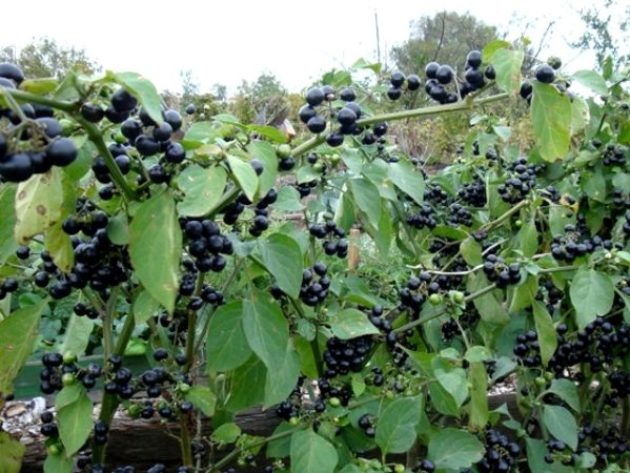
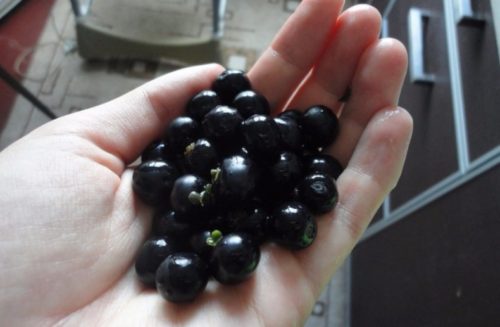
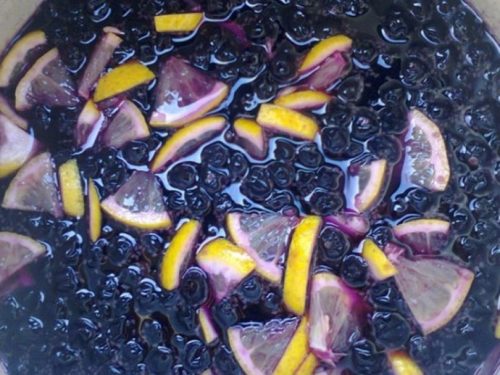
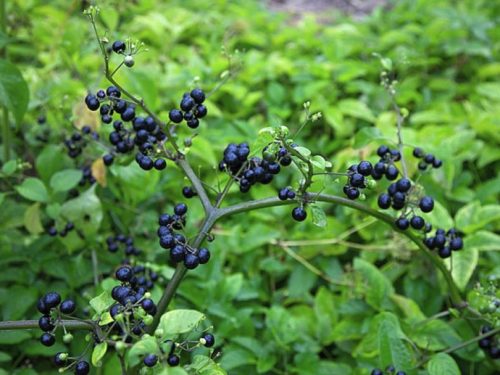
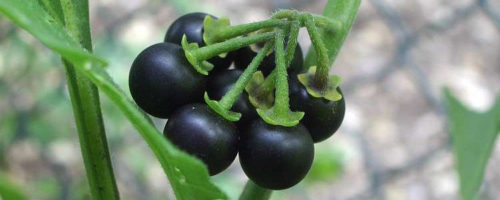




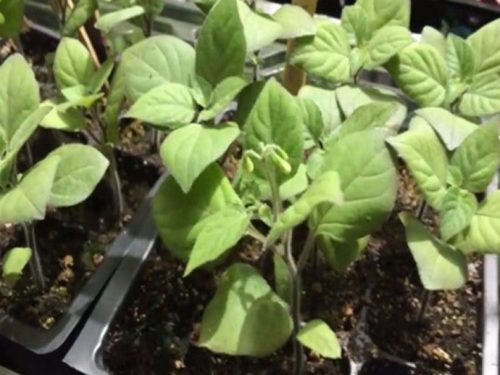
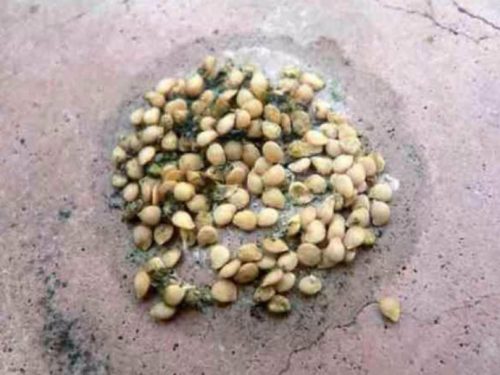

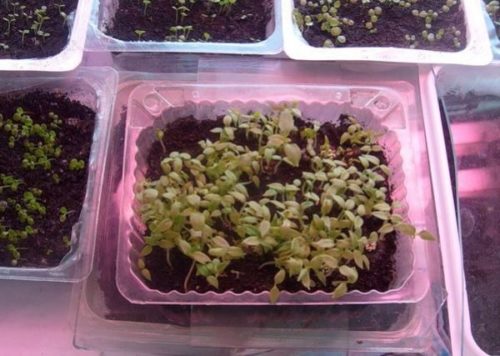
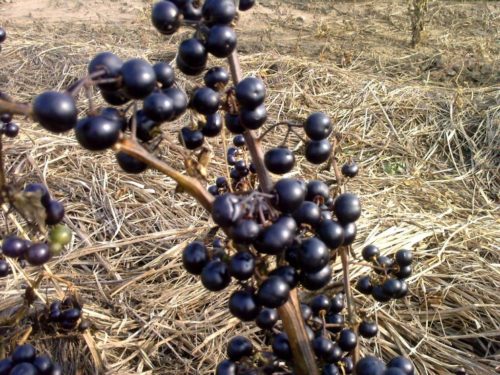



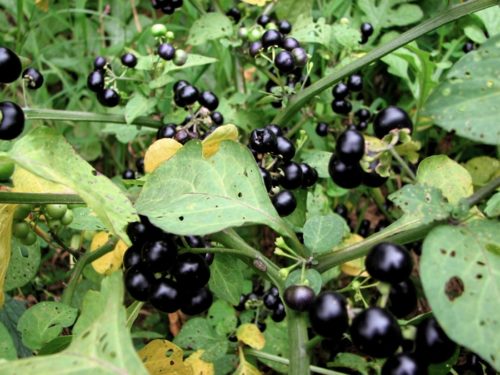
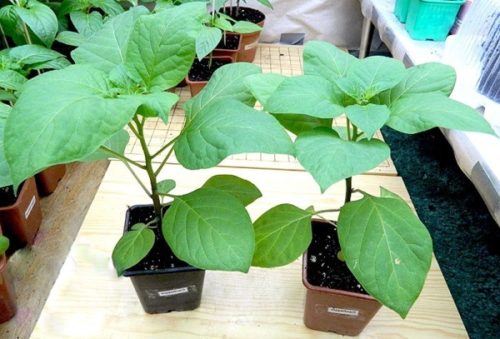
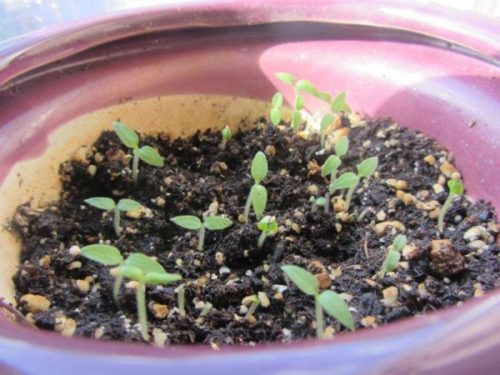

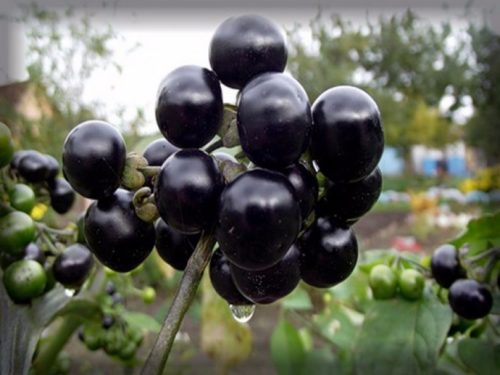
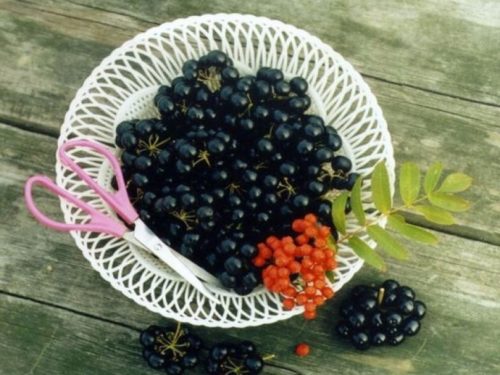












 Start a discussion ...
Start a discussion ...